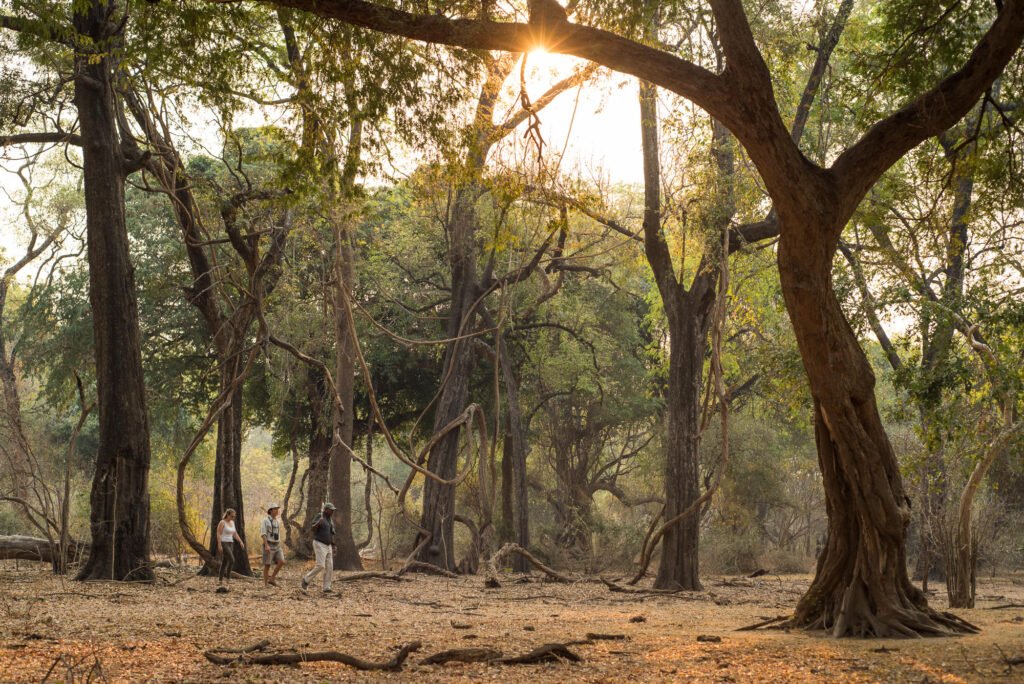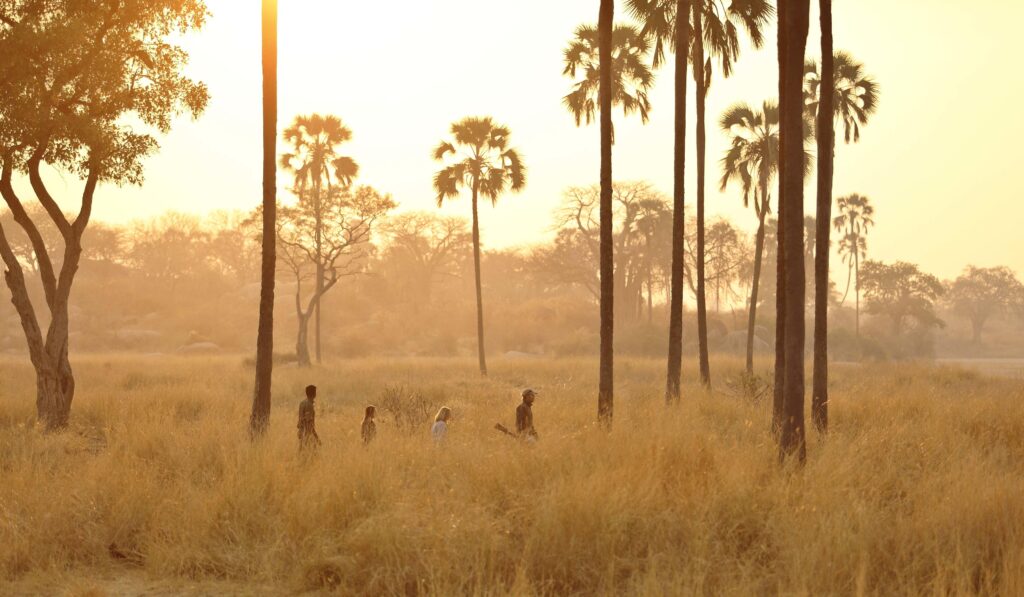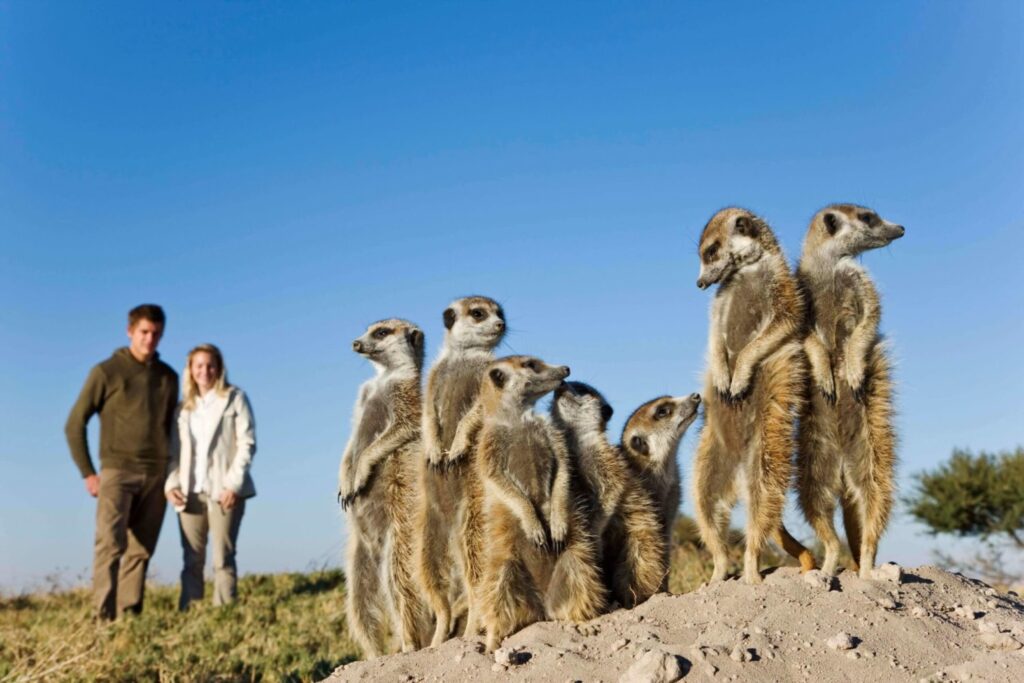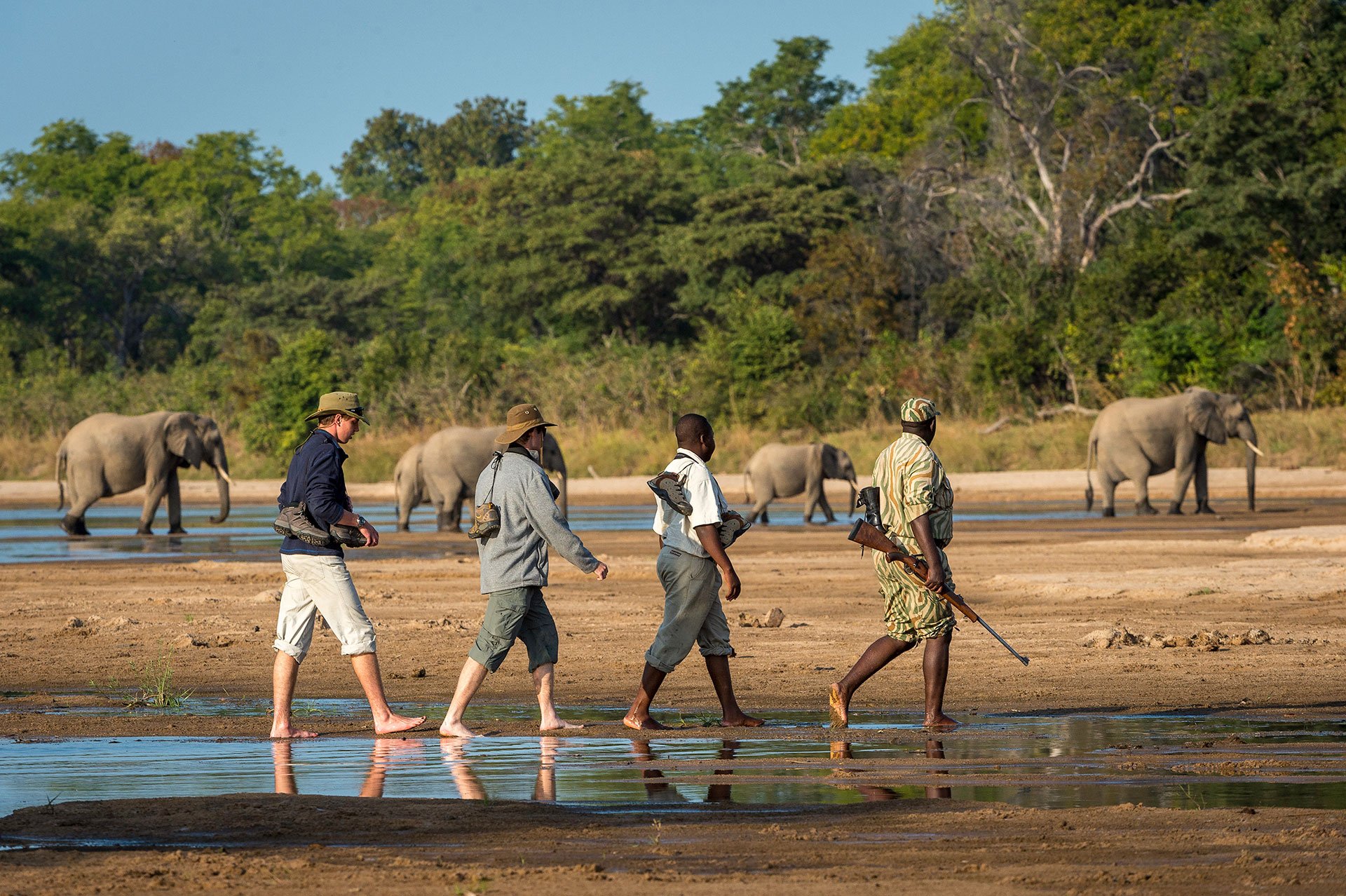Embarking on a walking safari is akin to stepping back in time, immersing yourself in the untamed beauty of Africa just as the early explorers did. It’s a journey that awakens the senses, offering an intimate encounter with nature’s wonders and engages you with the sights, sounds and scents of the wilderness. In this blog post, we look at the essence of a safari on foot, exploring its unique appeal, some key destinations and the unforgettable experiences on offer.
The Essence of Walking Safaris
Walking safaris represent a return to the roots of safari adventures, echoing the exploratory journeys of early adventurers who traversed the African bush on foot. Unlike traditional game drives, walking safaris offer a more intimate and immersive encounter with the natural world. Guided by experts, visitors cross diverse ecosystems ranging from savannah plains to forests, engaging the senses for an experience like no other, from the scent of wildflowers to the call of distant lions.
Walking safaris offer a multitude of experiences including tracking. watching elusive bird species and learning about the intricate ecosystems that sustain life in the bush. Witnessing the drama of predator-prey interactions while on foot certainly gives a deeper appreciation for the delicate balance of nature.

Key Destinations
Walking safaris have become a hallmark of African adventure, with several countries renowned for offering these immersive experiences amidst their diverse landscapes and wildlife. The South Luangwa National Park in Zambia holds the distinction of being the birthplace of the walking safari. In fact, visitors to all of the parks in Zambia can explore the pristine wilderness on foot, accompanied by charismatic guides. Zimbabwe is another hotspot for walking safaris, offering the chance to traverse open floodplains and riverine forests while tracking wildlife on foot.
Kenya’s Laikipia Plateau, South Africa’s Kruger National Park, Botswana’s Okavango Delta, Malawi’s Majete Wildlife Reserve, and Tanzania’s Ruaha National Park are also sought-after destinations for walking safaris, each offering its own unique terrain and wildlife encounters. Whether it’s spotting the Big Five or encountering rare antelope species, walking safaris in these countries provide wonderful opportunities to connect with nature on a deeper level.

Styles of Walking Safaris
From family friendly walking safaris in Kenya’s Matthews Range, to the thrill of walking in the vicinity of the wildebeest migration in Tanzania’s Serengeti, or through the riverine landscape of Zambia, the range of walking safaris available is almost endless. Many camps will offer a morning walk instead of a game drive, setting out on foot to reveal the night time movements of the resident wildlife.
More specialised adventures include walking with habituated meerkats, tracking a specific animal on foot such as lion, elephant or rhino, or walking to a lightweight fly-camp in the middle of the bush for a night under the stars. Then there are multi-day mobile walking safaris where the camp moves with you.

Conclusion
Walking safaris offer a unique perspective on Africa’s wilderness, allowing you to forge a deeper connection with the natural world. Whether embarking on a leisurely stroll across the savannah or tracking wildlife through dense forests, the thrill of exploration and discovery awaits those who dare to venture off the beaten path. So lace up your boots, heed the call of the wild, and embark on an adventure of a lifetime with a walking safari in Africa.
If you would like to learn more about the different options for a walking safari, or any other holiday to Africa, please do get in touch to discuss your wishes. We would be delighted to help you.
